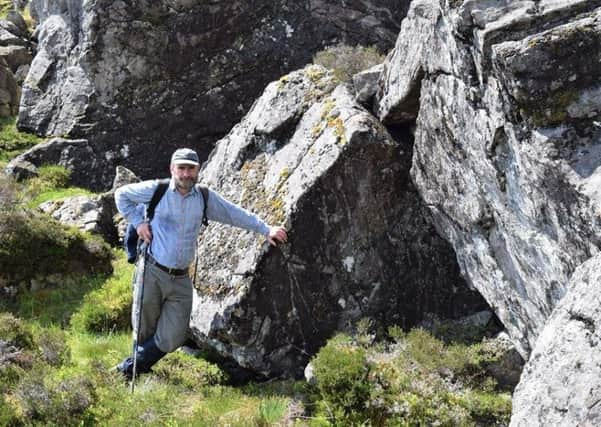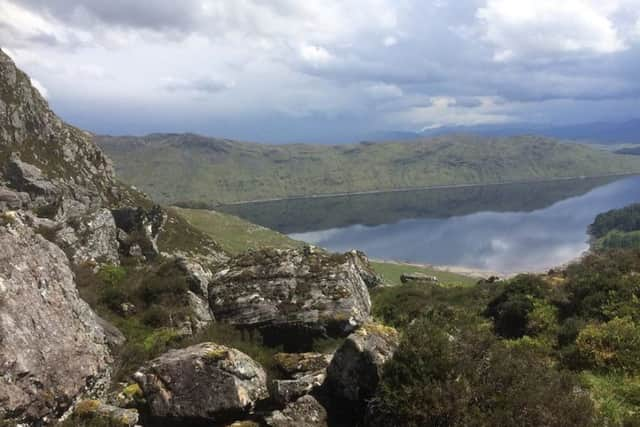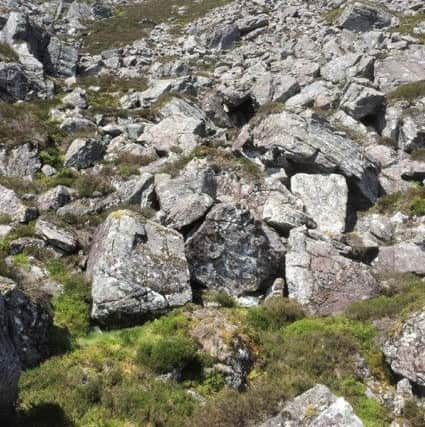Has the real Bonnie Prince Charlie '˜cave' been found?


Members of the 1745 Association claim they have discovered a spot on Ben Alder that closely matches the description of where the Prince was concealed by one of his closest allies.
Walkers and historians have long sought to establish the whereabouts of the hideout where the Young Pretender stayed with Cluny MacPherson in early September 1746 after five months on the run.


Advertisement
Hide AdAdvertisement
Hide AdKnown as Cluny’s Cage, the shelter was built over two floors from timber and thatch and concealed in a rock face.
Maps of the area have long recorded “Prince Charlie’s Cave” on the southern slopes of the Munro.
But The 1745 Association believe they have may have found the true site of the hideaway, slightly to the west of the marked spot and around a kilometre above.


To confirm their find, the association now hopes that further research and an archaeologist’s survey can be carried out at the site, where evidence of a lit fire was also found.
Advertisement
Hide AdAdvertisement
Hide AdGlen MacDonald, vice chairman of the association, said the unmapped spot near Ben Alder Cottage was discovered at the weekend.
He said: “Whilst we can’t claim with any certainty that it is the spot of Cluny’s Cage - and where Bonnie Prince Charlie hid - we feel it is a reasonable contender. It is certainly an advance on the search.”
Mr MacDonald said the site was “extremely high up” the rock face and reached by stepping over a lip where a flat, depressed area could be found.


“As you step over the lip you are out of sight of anything below but you have these commanding views to the south ,south east and west.”
Advertisement
Hide AdAdvertisement
Hide Ad“It is said the spot for Cluny’s Cage was chosen given that smoke from cooking and fire could dissipate up the cliff face without being viewed.
“We also know from accounts of people who were there in 1746 that two very large rocks formed a perfect fireplace from which there was a natural chimney. What we found entirely matched that.”
He said that smaller stones at the site “appeared” to be blackened on the underside, suggesting a fire may have lit there sometime in the past.


The “thicket of trees” said to conceal Cluny’s Cage were no longer at the site but it was “seemingly well known” that there were more trees in the area during the mid 18th Century, Mr MacDonald added.
Advertisement
Hide AdAdvertisement
Hide Ad“The association will now consider what further research or archaeology may be feasible and affordable in order to establish this beyond reasonable doubt,” he said.
Some believe that the site of Cluny’s Cage can be found to east side of Loch Ericht at a spot known as Crag of Eagles.
The association have dismissed this theory. Accounts of Bonnie Prince Charlie’s arrival and departure from the cage, which was prompted by the arrival of a ship at Loch nan Uamh in Lochaber to take him home, make no mention of him crossing Loch Ericht on a boat as he tried to head west.
Furthermore, there is no detail about him walking around the southern shore of the loch as he departed.
Advertisement
Hide AdAdvertisement
Hide AdMr MacDonald added: “Also the Crag of Eagles in not on Ben Alder, which doesn’t fit with historical accounts. The approach to get up to that spot is also extremely steep and highly hazardous to reach. The area doesn’t command quite the same view so we don’t buy it.”
Cluny MacPherson spent nine years hiding out in the Highlands following Culloden with a £1,000 bounty on his head.
He retreated to several hideaways after his home, Cluny Castle, at Laggan near Newtommore was burned down by government troops.
Such was the secrecy surrounding his whereabouts, not even his wife knew where he lay.
Advertisement
Hide AdAdvertisement
Hide AdIn early September 1746, the fugitive met with Bonnie Prince Charlie at a shieling called Uiskchibra, in Ben Alder - a “very bad and extremely smoky, miserable” shelter, where the prince stayed for two nights as he planned his exit from Scotland.
Then, Macpherson took him to “very extraordinary and romantic habitation” - now known as Cluny’s Cage.
The Cage sat in a small thick bush of wood. Trees were laid on the floor, arranged to compensate for the incline in the ground, and covered in earth and gravel. The trees overhead created a natural thatch with a space made for a chimney to flow.
According to accounts, the Cage could contain six or seven people, with four regular stationed there - one usually playing cards, one keeping watch, one baking and another firing bread and cooking.
Advertisement
Hide AdAdvertisement
Hide AdCharles left here on September 13 1746, travelling through the night to Borodale. He slept one night here before leaving from Loch Nan Uamh, six days after leaving MacPherson, who also ended up in France.
